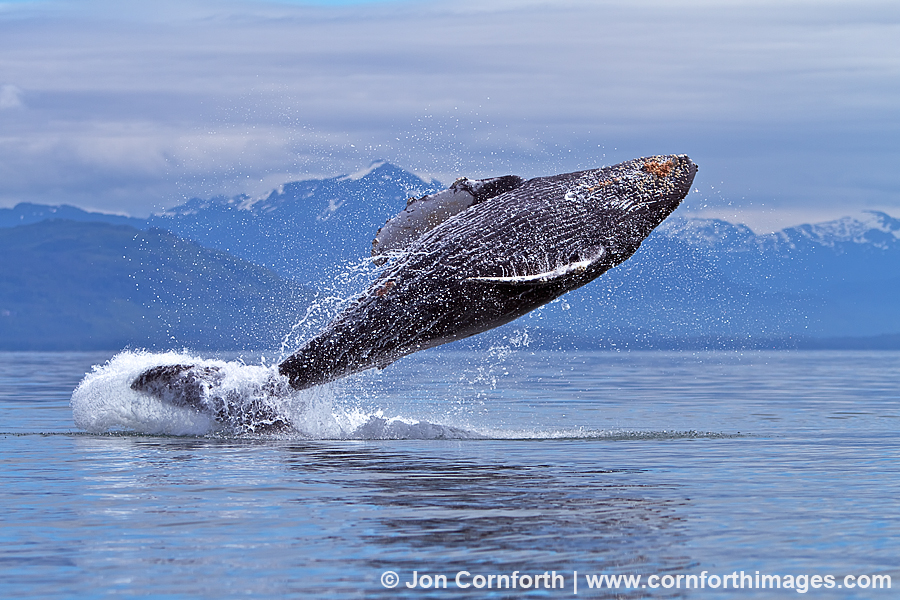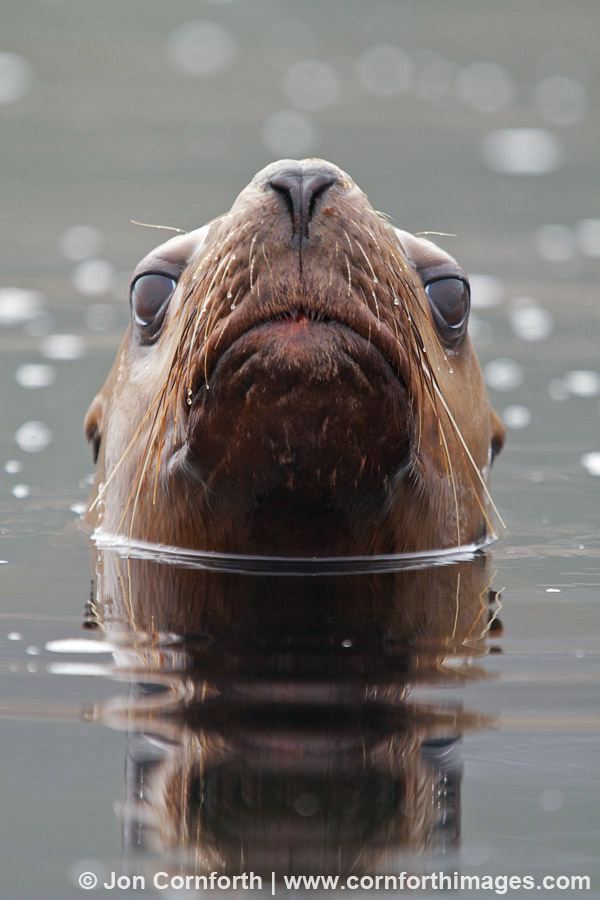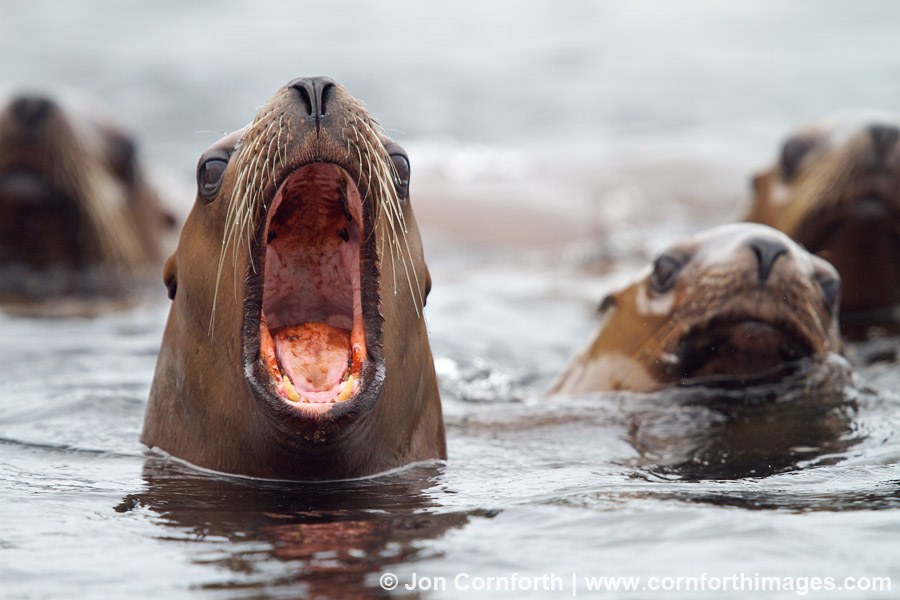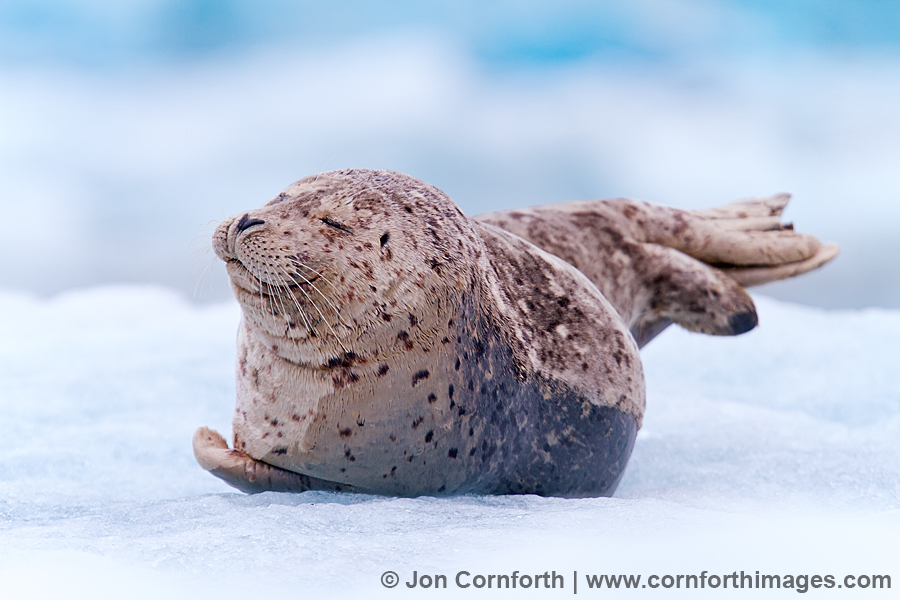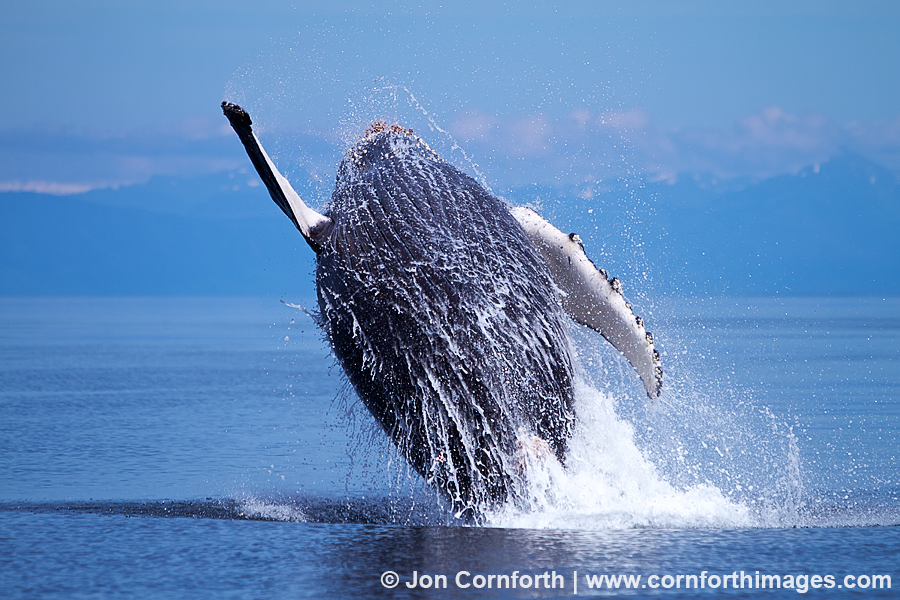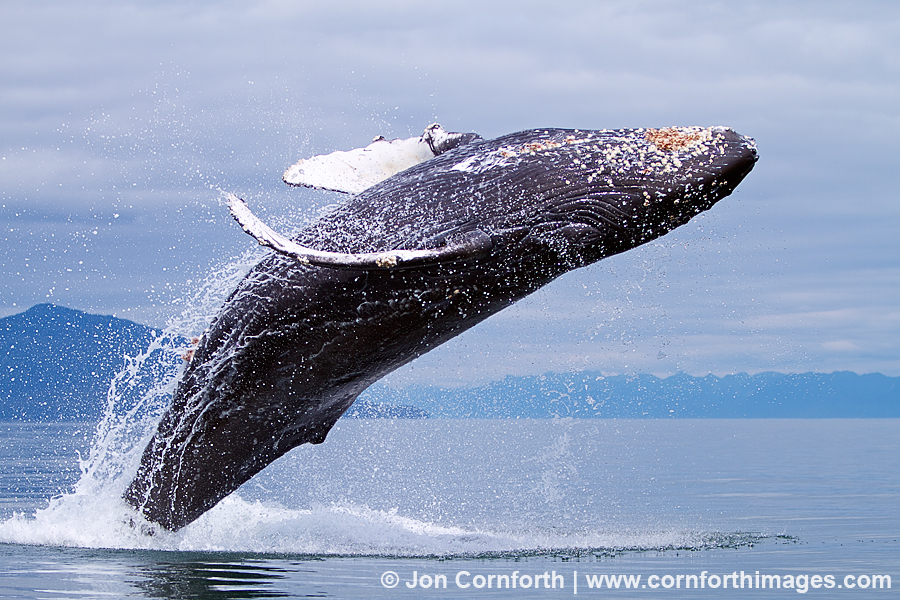
Humpback Whale Tail 101
Posted onFor marine mammal photographers like myself, photographing whale tails is not that hard to do, but creating a striking image is. This is the only part of the animal that most whale watchers will ever see. It’s not the most dramatic behavior, and certainly nowhere near as photogenic as a full body breach. Over the years, I have taken tens of thousands of whale tail images. I am grateful that I no longer have to spend money on film since most of these images are utterly useless and unworthy of even the 1 second of my time that it takes for me to hit the delete button. Still, every once in a while I photograph a nice tail, like this one. Here’s how the sequence of events needs to work in order to create an image like this. A whale has to surface within a few hundred yards of my boat. It will normally take 3-5 breaths on the surface before diving, which might give me enough time to close the distance on the tail and take up a position behind the whale, not slightly to the left or right, but directly behind it. When the whale begins its dive, there is usually 1 image where the tail is almost at its apex and water is pouring off of it. I am also ever vigilant for a pleasing background, like these snow capped peaks and non-distracting blue mountains in the distance. The entire image has to come together, not just any one part. You can also see other whale photos when you visit my whale photo galleries.

